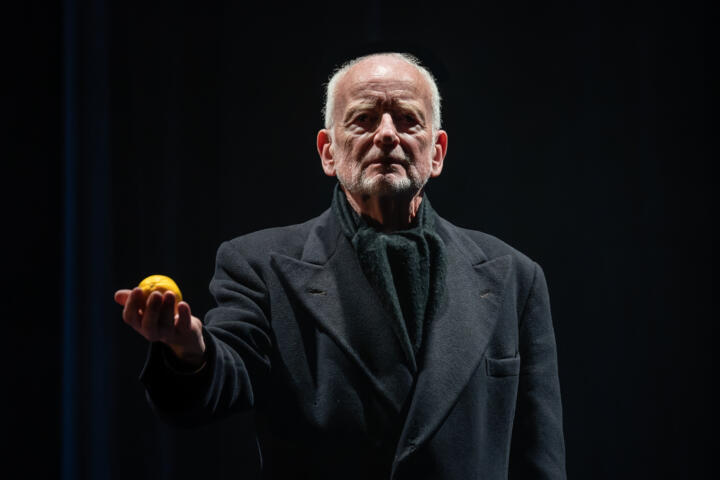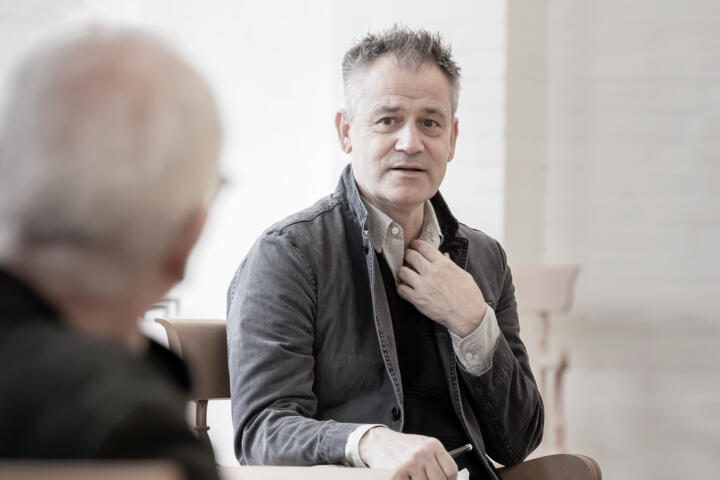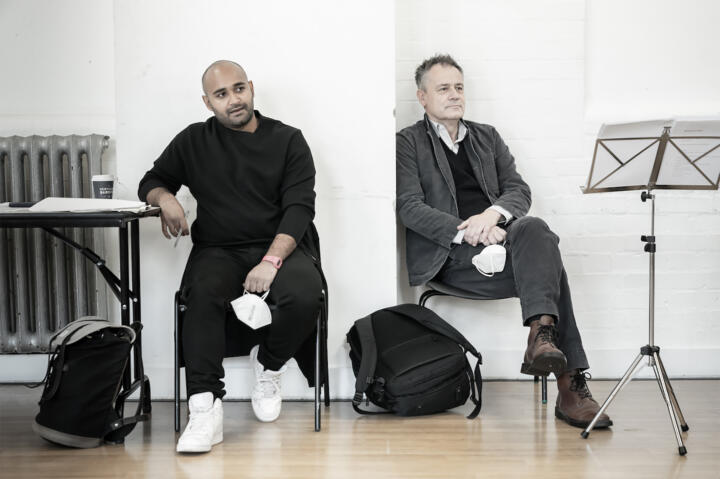The Lemon Table | Extras
The Lemon Table– In conversation with Titas Halder
Co-Director Titas Halder talks to Education Associate Dominic Francis about The Lemon Table rehearsal process
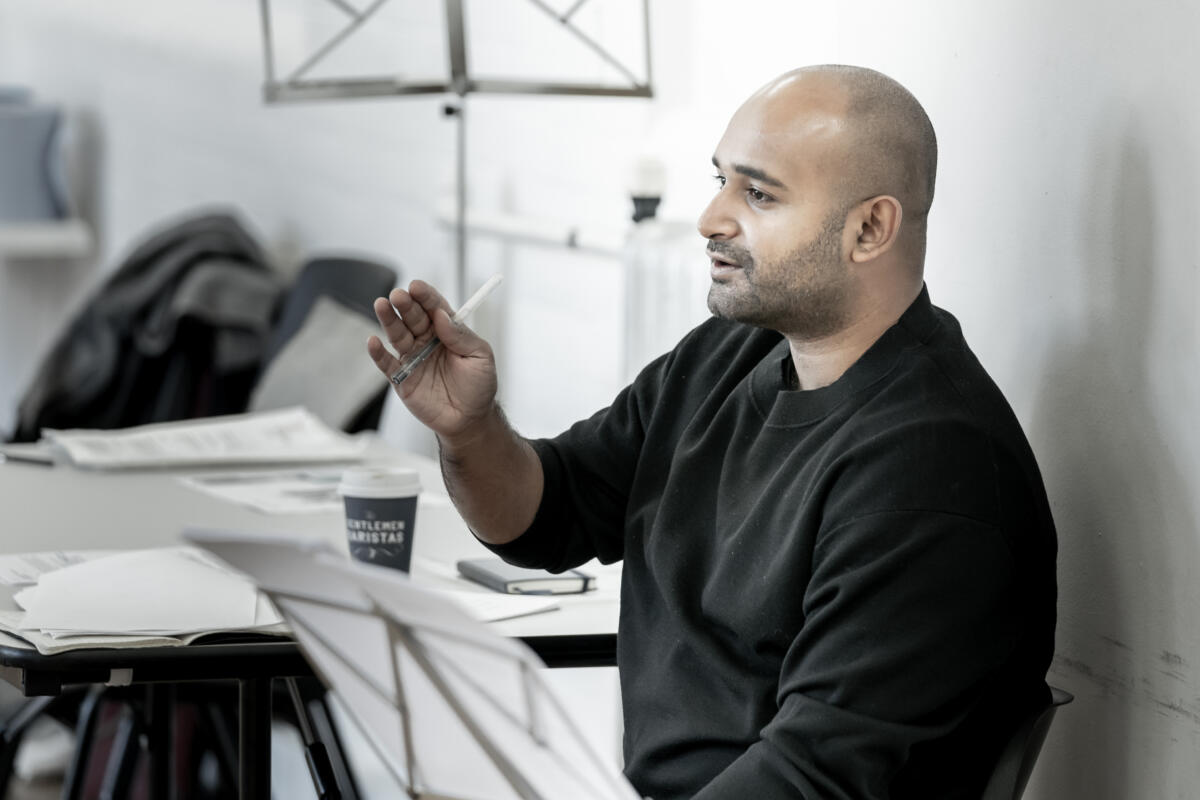
You’re now halfway through the second week of a two-week rehearsal period. Can you give me a brief overview of what’s happened so far, going back to the first day?
As you say, we have two weeks – three if you include our production week. Coming into the room Ian had, to some extent, learnt the text. Michael and I were wondering, ‘Will we come in on day one and see a person who’s got the whole thing down, and is he simply going to give a performance? Or are we going to have to start from scratch and work something out?’ It was pretty remarkable. We came in and Ian really did speak the text, the whole thing. It was so interesting because you could absolutely see the architecture of it, the skeleton, and all the reasons why he should be telling us that story as a performer and everything he brings with it, his qualities as an actor – his voice, all of those things.
But at the same time, for me as a director – and I think for Michael as well – we were looking at it and thinking: ‘We need to find the turns of the story, the reason why these things unfold. We need to understand why this story is being told.’ And then there’s the practical element of how this story should exist in space, in the space we’re in, which in a sense is to talk about staging. Ian had literally practiced it around his kitchen table and then suddenly you walk into the rehearsal room and there’s this very big, long table and two chairs.
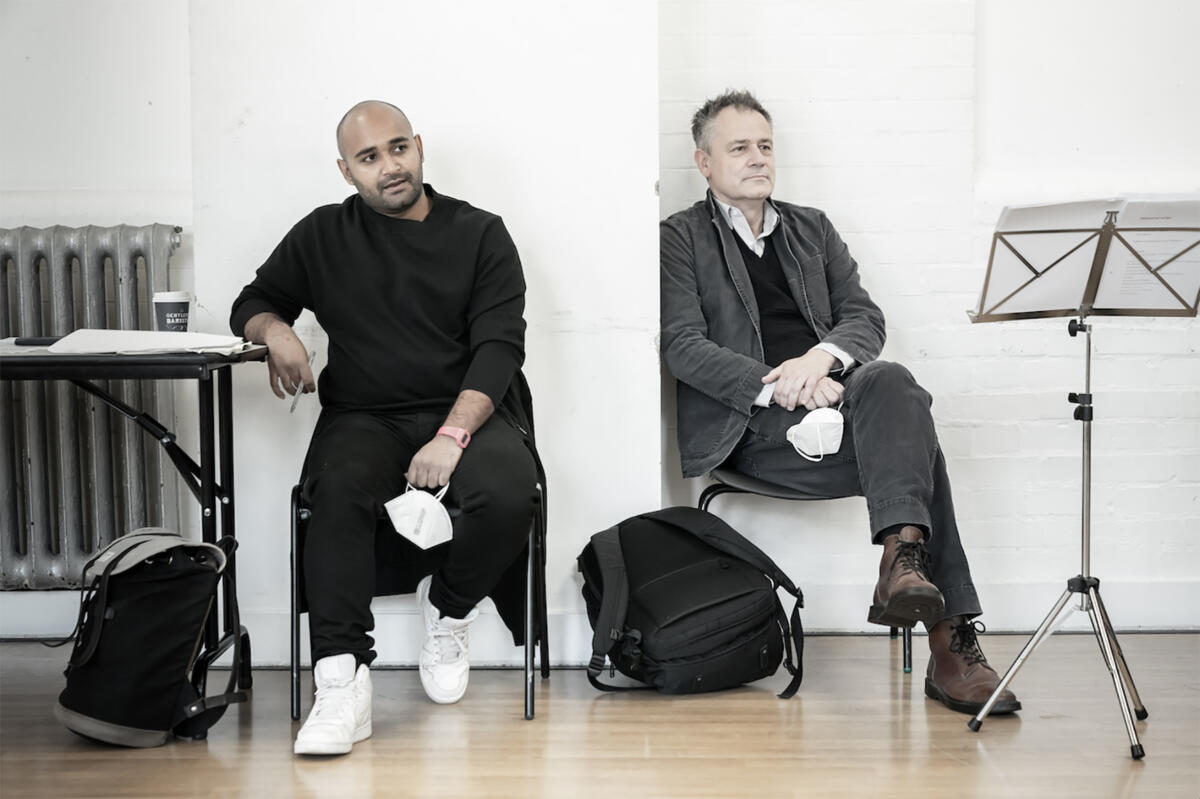
So those elements of the set design were there from day one?
Yes. So the advantage is, it’s a bit like being air-lifted into a show – we hit day one with all the furniture and costume in the room, because a lot of planning had gone into it by that stage.
And there are stage directions in the script, so Ian had clearly given thought to how the piece might be staged. How much did you attend to that?
He had and some of it stands and some of it doesn’t, and that’s just because you’ve got to discover what’s the best way to put a story on its feet in the space you’re in. For me, as a director, you of course look at what a writer’s put on the page and respect it because it’s there for a reason. So when it says, ‘He picks up the chair at this point’, maybe that is where he picks up the chair but, at the same time – and I think particularly with a one-man show where everything needs to earn its place on stage, earn its moment – you really have to question: ‘Do you need to stand up there? Do you need to sit down?’ So there was a bit of push and pull about it: ‘Let’s use what’s on the page as a template certainly, but now that we have all of that in front of us in 3D, we’re trying to take a thing that’s 2D and make it 3D.’
I take it Ian was open to that process? He’d created and performed a version of the piece before, for BBC Radio, so naturally would feel a sense of ownership over it.
Yes, he does own it and ultimately it is his performance. What Michael and I are there to do, in any context, is to make that performance sing in the most beautiful way it can. In that sense, I think I would always be questioning: ‘Do you need to put the programme down on the table there? Do you need to pick it up then?’ And it’s the simple things sometimes, like sitting there in the audience as the director and saying, ‘I need more access to the character at this point, so could you be at the front of the stage?’ And if that feels right to Ian, he’ll do it.
Was there a lot of discussion about Sibelius and his music in week one?
There hasn’t been time for tons of discussion, but what we have had is its impact. The music came in quite quickly. Michael had already spoken to Ella and Ian about it, about which versions of the piece to use. Ian and Michael had, I know, talked about various versions.
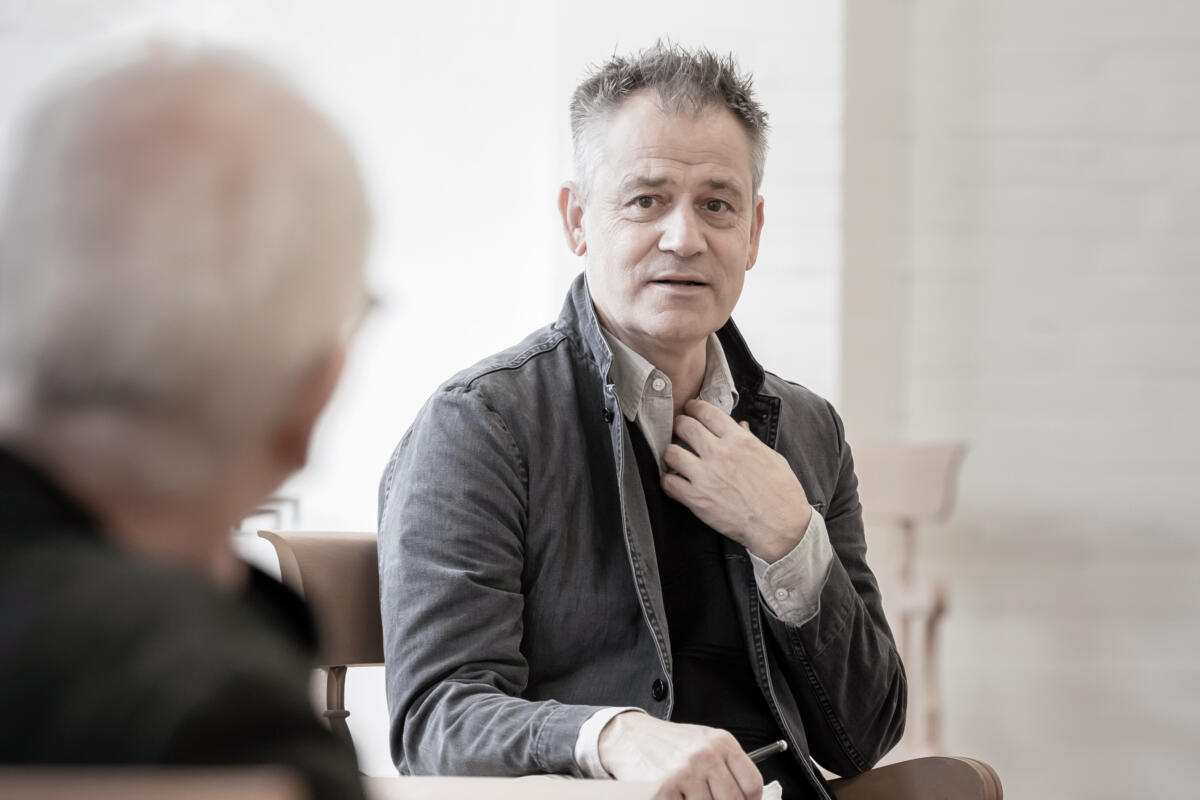
Were they particularly knowledgeable about these different versions?
Yes, because they have a shared experience of Sibelius’ music. They’ve seen some of these versions live and there are some performances on CD which they are emotionally close to. So they both came in with very clear ideas of which versions they might want to try. I have to admit I knew very little about Sibelius before. It’s a joy to sit there and be struck by this incredible power, the majesty of the music.
Did you listen to the 4th and 5th symphonies outside rehearsals?
Yes, but you want to have more time. If it was, in inverted commas, a ‘normal’ rehearsal period, or a more protracted period of time, I’d be walking around with the music in my head for three, four months or even longer than that. Of course, for Michael and Ian they have been for years. It’s very much their world, where music lies for them. It has emotional resonance for them.
What are the challenges of doing a solo show, from rehearsals to performance?
For me, the director, or for them, the performer?
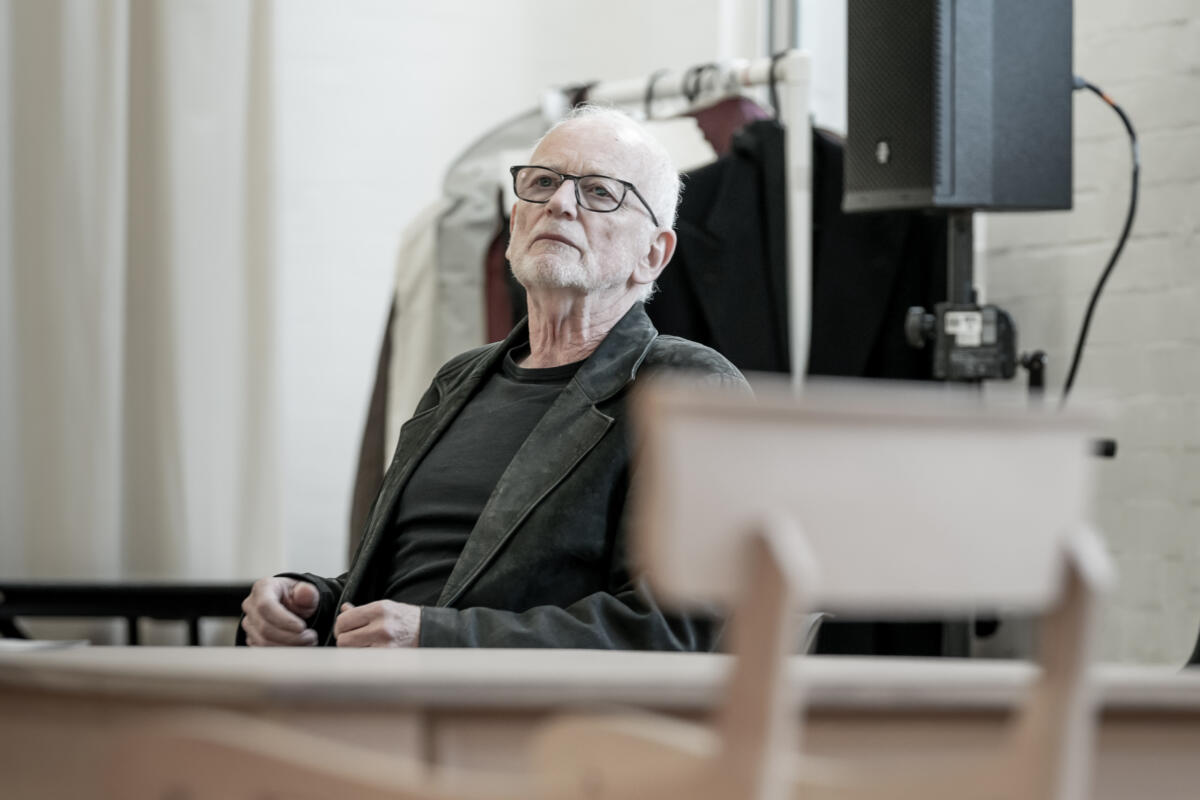
Let’s start with the performer. What do you think are the main challenges of a solo show for them?
I think it’s so hard to do a piece by yourself. Many actors feel they don’t want to be out there alone. When you’re in a cast you’ve got each other, you have your company on stage – you have people with you, you’re making a story together, you’re out there fighting the fight together. Equally, when you’re in a cast of ten, twenty people maybe the play’s three hours long but you’re only on stage for ten minutes. This is seventy, eighty minutes and it’s all Ian – it’s all on him. That age-old question that audiences always ask, ‘How do you learn your lines?’ actually becomes really pertinent now: ‘How do you learn all that?!’ And the energy needed: How do you sustain a performance?
We were talking about that today in the room, likening it to marathon training because, as I said, on day one Ian had the text learnt, but there’s a big difference between having it learnt and having accessibility to it – having the text liquid enough to change and play with it, to try new things as you’re bringing it to its fullest life. I can see it everyday – there’s a sort of percentage bar you hit where each day it gets higher and higher, and Ian gets closer and closer to being able to do the full show at one hundred percent. But it’s really, really hard. I think for a one-man show a Creative Team also has to step up and give the performer their all while you’re making it. They have to know that you are totally there for them at every level.
As a director in the rehearsal room with only one performer, what are the challenges? It’s rather a relentless focus on just one other person.
I think that’s the strange thing. I directed a solo show before with a wonderful actor and in the first few days of rehearsals, during our lunch breaks, he would ask me about my family. I was a bit younger then and I didn’t really want to talk about it so I would evade these questions and not really answer him. But he persevered and I realised after a few days that because, in the context of a one-man show, he was there on stage giving everything, he also needed me to give everything of myself to him. There needed to be this kind of agreement – this sense that you are all there, one hundred percent, giving everything you can. And, as you say, you have to be super focused and alive to every moment. You would be in any show but there is something more heightened about that feeling with a solo show. It’s a delight because you become really attuned to it. Suddenly moments work and you can see them all blossom like flowers on the vine. There’s a sort of tapestry of lights and they all start lighting up one by one, until slowly the whole thing is alight. You both have to have that faith that it’s going to get to that point. At the end of the day, when you both run out of steam, that’s all you can do for that day. Doing a solo show is a great advert for when you think you’ve run out of energy, you should end the rehearsal day.
And a twelve till four rehearsal day is the optimum length that one person can be that centre of attention?
I think so, yeah. If you’re trying to do ten till six with a big lunch break, I personally don’t see how it’s possible because you’d be getting tired even over lunch. You can even hear my voice is tired and I don’t talk that much during the day. Ian obviously has to rehearse the whole piece and then do notes, so he has to take care of his voice, he has to take care of his energy levels.
Plus there’s presumably all the other activities – publicity, etc.?
Yes, Ian’s got to do a lot of press. So all of that stuff is coming into the room.
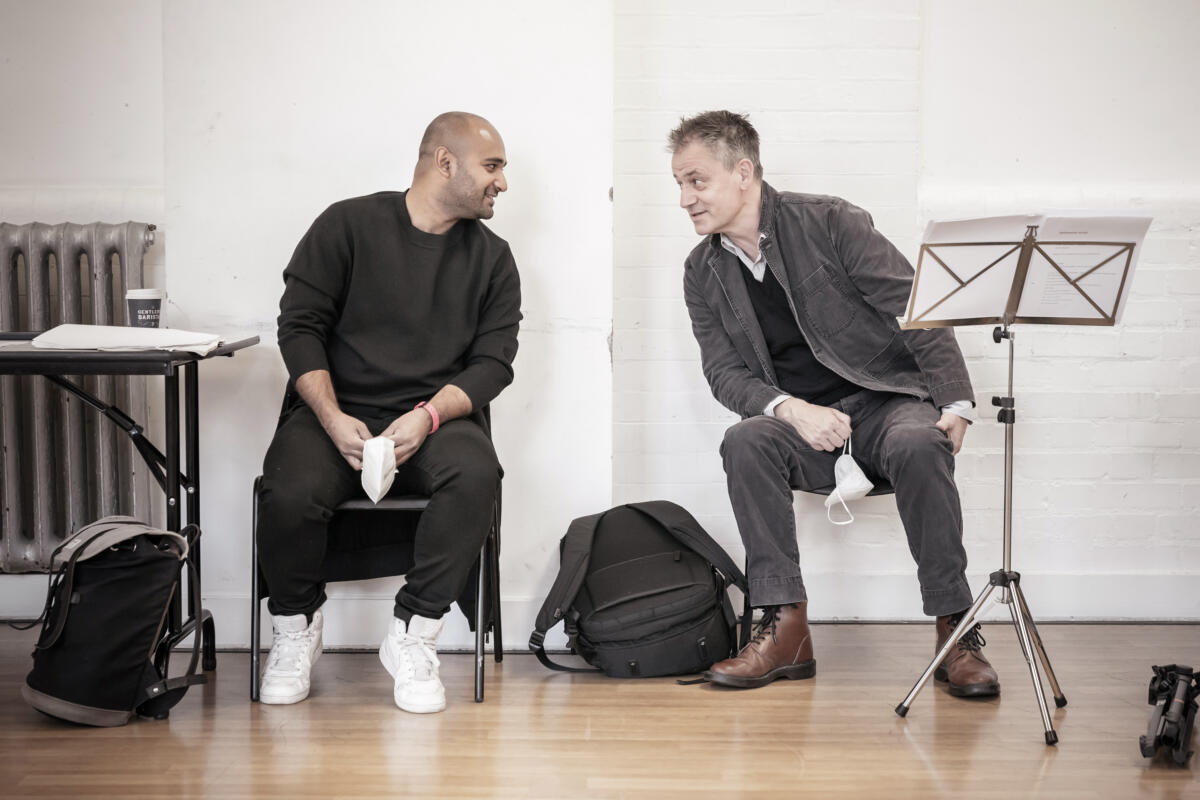
You’re now halfway through week two of rehearsals, starting production week next week. What happens from here? Can you outline it out for us.
So we get into the theatre in Salisbury next week. I believe the fit-up is on Monday, so the first time we see Ian on stage is Tuesday. We’ve got sound in the room now but next week, for the first time, we’ll start to see what lighting can do. Paule Constable, the Lighting Designer, is another long-term collaborator of Michael’s, so again there’s this sense of a few long-term collaborations at work here. And we’ll also really see the set for the first time. We have our furniture now but we’ll see the set and understand it properly.
Ian and I talked about the fact that there’s a frame around the whole stage, an upright frame, which literally makes it seem like a picture and we haven’t really thought about it. We haven’t been able to say, ‘Is that something you can touch? Is that something you can use for staging?’ And there’s this wonderful curtain on a swag and, again, we don’t know quite know how we can use it yet.
So, in a way, you need to go into the production week knowing that there’s still a whole load of treasure to discover, a treasure trove of things that you can find and say, ‘Oh, we’ve done this in the rehearsal room but now we’re here, let’s use this – let’s use the curtains, let’s use the frame’. It will feel different under the lights, it will feel different with the sound in its whole rig.
I think we’re on pretty quickly. We have our technical sessions, dress rehearsal – if we’re lucky, enough time for a second dress – a preview and then the show opens. On the one hand it looks quite quick, but on the other there’s a good amount of time to make it all happen. And it’s not because it takes a short amount of time to do these things, it’s because everybody’s already moving at pace.
The team’s been really great, all aspects of it – the production side of things, etc. – everyone’s been working very hard. Before we got anywhere near the rehearsal room, all the conversations on Zoom were focused on strategic planning: ‘How do we make all this land at the right time?’ There was a moment during rehearsals where we finished for the day, the table was whisked away to get painted and then returned just in time for the next session. Everything’s run like a really well-oiled machine.
